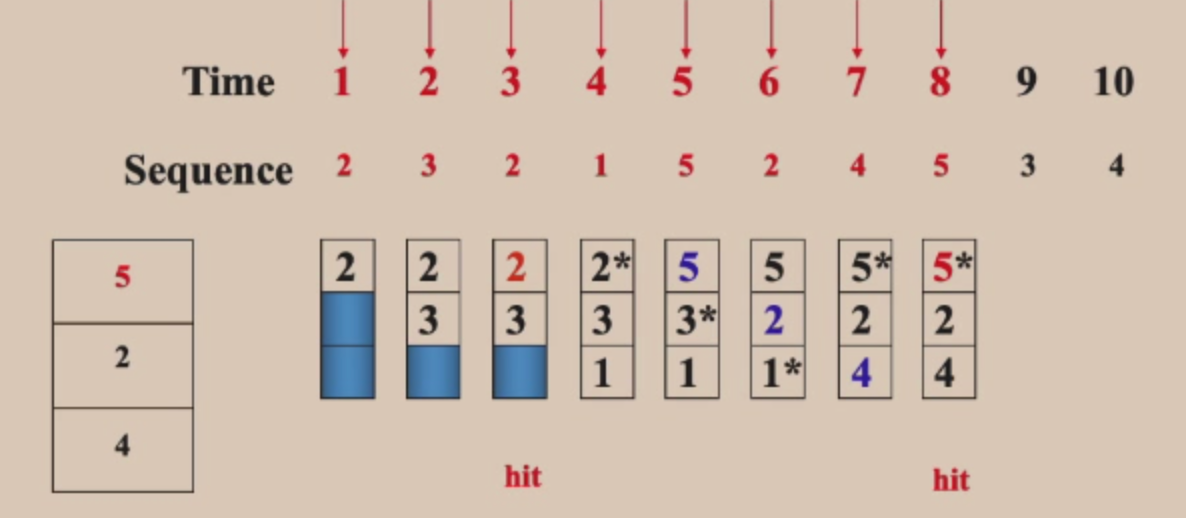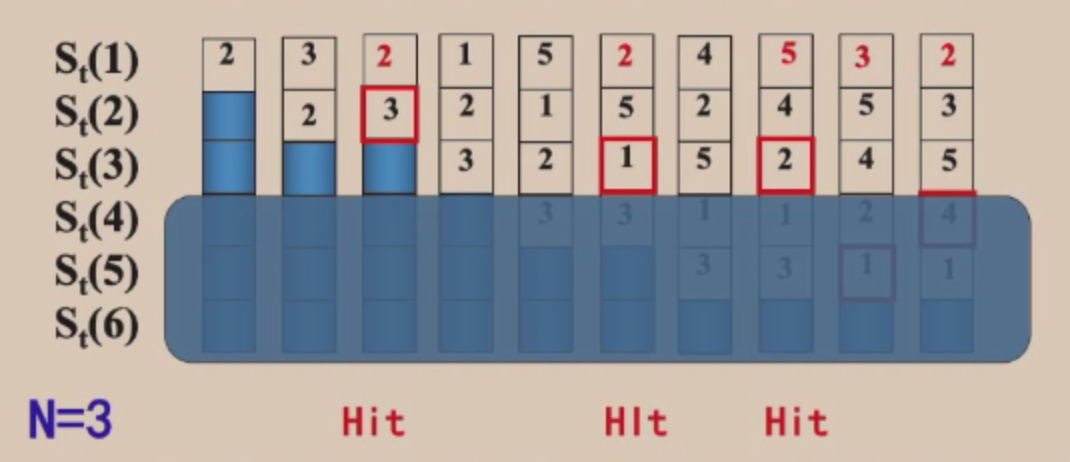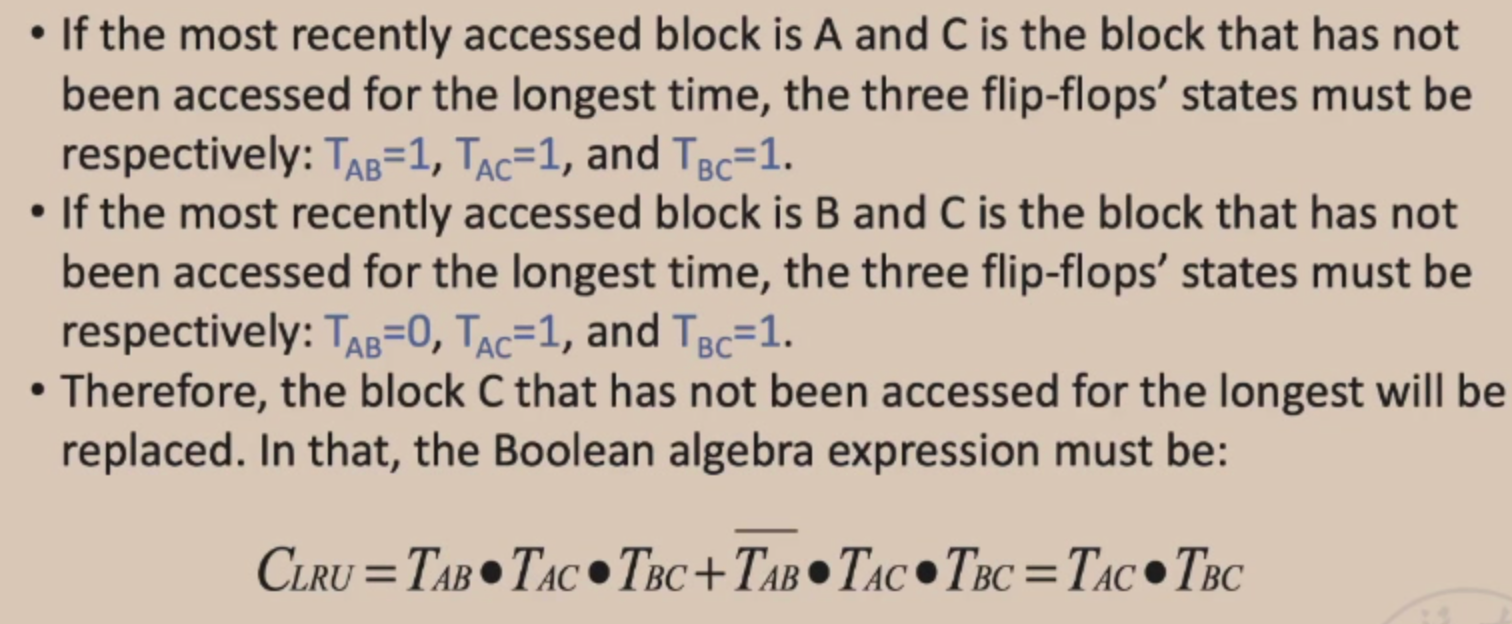第9课
约 777 个字 32 张图片 预计阅读时间 3 分钟
Memory Hierarchy¶
Cache¶
Q3: Block replacemet¶
当要访问的数据不在Cache当中,对于直接映射不需要考虑替换,因为只有一块对应的,没有选择问题。
- Random replacement;
- Least-Recently Used(LRU):从局部性来考虑,最近最少使用的块;
- First in, First Out(FIFO);
Example1:
- FIFO

- LRU(3位,因为size只有3)

- OPT(最优算法,考虑的是未来的事情,必须程序全部跑一遍才知道,所以实际中很难做到,可以用来衡量其他算法的优劣)

操作步骤
Example2:
- 除了替换方案之外,对于一个访问序列,序列本身也会对命中率也会有影响;

Example3:
- 当cache块大小改变,对命中率还是有影响的;

Stack replacement algorithm
-
保证算法随着cache块的增大,命中率只增不减

-
LRU算法是Stack replacement algorithm

- FIFO就不是Stack replacement algorithm

- 使得栈顶的元素永远都是刚刚被访问的元素
 当n=1,没有两个连续块是一样的,所以命中率为0
当n=1,没有两个连续块是一样的,所以命中率为0 当n=2,红色的块是命中的,所以命中了一次
当n=2,红色的块是命中的,所以命中了一次 n=3,命中了三次
n=3,命中了三次 n=4,命中了四次
n=4,命中了四次 n=5以及更大,命中了五次
n=5以及更大,命中了五次 统计图:
统计图:
- 怎么比较各个cache的块的次序(访问远近的时间次序)






Q4: Write strategy¶
- 如果hit命中
- Write-through: write is done synchronously both to the cache and to the backing store。Write-through(直写模式)在数据更新时,把数据同时写入Cache和后端存储。此模式的优点是操作简单;缺点是因为数据修改需要同时写入存储,数据写入速度较慢。
- Write-back: initially, writing is done only to the cache. The write to the backing store is postponed until the cache blocks containing the data are about to be modified/replaced by new content。Write-back(回写模式)在数据更新时只写入缓存Cache。只在数据被替换出缓存时,被修改的缓存数据才会被写到后端存储(即先把数据写到Cache中,再通过flush方式写入到内存中)。此模式的优点是数据写入速度快,因为不需要写存储;缺点是一旦更新后的数据未被写入存储时出现系统掉电的情况,数据将无法找回。write back是只写cache,并使用dirty标志位记录cache的修改,直到被修改的cache 块被替换时,才把修改的内容写回main memory。

Write stall
-


-
如果write miss:
- Write allocate (also called fetch on write): data at the missed-write location is loaded to cache, followed by a write-hit operation. In this approach, write misses are similar to read misses.。Write allocate:先把要写的数据载入到Cache中,写Cache,然后再通过flush方式写入到内存中; 写缺失操作与读缺失操作类似。
- No-write allocate (also called write-no-allocate or write around): data at the missed-write location is not loaded to cache, and is written directly to the backing store. In this approach, only the reads are being cached。No write allocate:并不将写入位置读入缓存,直接把要写的数据写入到内存中。这种方式下,只有读操作会被缓存。
-

Example:
Split vs. unified caches
总结¶


内存的管理也有相应的几个问题
本文总阅读量次



